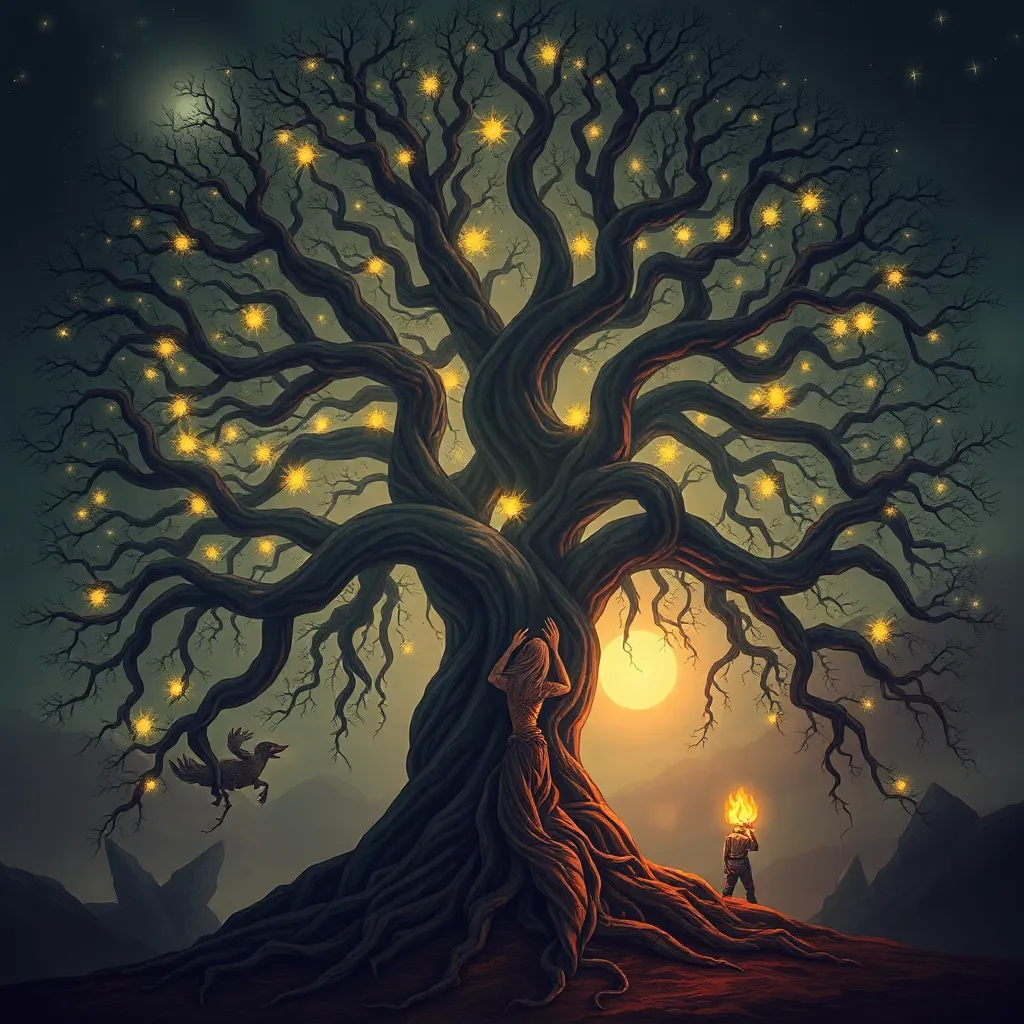The Hamadryads of Greece: Bound to the Fate of Their Trees
I. Introduction
The Hamadryads are enchanting figures from Greek mythology, often depicted as tree nymphs who embody the spirit of the trees they inhabit. These divine beings are not merely guardians of the forest; they are intrinsically linked to their respective trees, sharing a life force that connects them to the natural world. This article explores the significance of Hamadryads, their historical context, their physical and personality traits, their life cycle, and their cultural impact, focusing on their deep connection to trees.
II. Historical Context of Hamadryads
The origins of Hamadryads can be traced back to ancient Greek literature, where they are frequently mentioned in various myths and legends. They are often portrayed as beautiful young maidens, representing the life force of the trees they are associated with. Their stories intertwine with those of gods and other mythical creatures, emphasizing their vital role in the ecosystem.
In mythology, Hamadryads are closely associated with nature deities such as Artemis, the goddess of the hunt, and Dionysus, the god of wine and festivity. Their relationship with these deities highlights the interconnectedness of divine beings and the natural world, illustrating how the Greeks viewed nature as sacred and worthy of reverence.
III. The Nature of Hamadryads
Hamadryads are often depicted with distinct physical characteristics that reflect their connection to trees. They may have bark-like skin, hair resembling leaves, and greenish hues that symbolize their bond with nature. Their ethereal beauty and grace are often enhanced by their ability to blend seamlessly with their surroundings.
Each Hamadryad is linked to a specific species of tree, such as:
- Oak (Quercus)
- Pine (Pinus)
- Willow (Salix)
- Elm (Ulmus)
This connection is not merely symbolic; it is a literal bond, as the health and vitality of the Hamadryad are directly tied to the well-being of their tree. If the tree suffers or dies, the Hamadryad experiences pain and ultimately faces death.
In terms of personality, Hamadryads are often portrayed as gentle, nurturing, and protective of their trees and the surrounding environment. They embody the spirit of growth and renewal, often seen engaging in playful interactions with woodland creatures and other nature spirits.
IV. The Life Cycle of Hamadryads
The life of a Hamadryad begins at the moment a tree sprouts from the earth. This unique birth ties their existence to the life cycle of their tree. As the tree grows and flourishes, so does the Hamadryad, embodying its strength and vitality.
The cycle of life and death for Hamadryads is poignant. If a tree is cut down or dies due to natural causes, the Hamadryad connected to it will also perish. This interdependence serves as a powerful symbol of renewal and decay, emphasizing the importance of trees in the cycle of life.
V. Cultural Significance of Hamadryads
Throughout history, Hamadryads have been represented in various forms of art and literature, from ancient pottery depicting their graceful figures to modern poetry celebrating their mystique. They embody the beauty and fragility of nature, serving as a reminder of the importance of preserving the environment.
In ancient Greek religion, Hamadryads were venerated as part of rituals honoring nature and its deities. Their influence can still be seen in contemporary interpretations, where they are often invoked as symbols of the natural world and the need for its protection.
VI. Environmental Themes in Hamadryad Myths
The myths surrounding Hamadryads often convey profound environmental themes. Their close connection to trees serves as an allegory for environmental stewardship, emphasizing the need to nurture and protect the natural world. The stories of Hamadryads highlight the consequences of deforestation and the loss of biodiversity, resonating with contemporary ecological discussions.
As the modern world grapples with climate change and habitat destruction, the tales of Hamadryads remind us of the importance of conservation and the interconnectedness of all living beings. These narratives encourage us to consider our role in preserving the earth’s ecosystems.
VII. Modern-Day Legacy of Hamadryads
The fascination with Greek mythology, including the stories of Hamadryads, continues to thrive today. They have found their way into popular culture, appearing in literature, films, and art, often reinterpreted as symbols of nature’s resilience. Their enchanting presence serves as a bridge between the ancient world and contemporary environmental issues.
Moreover, Hamadryads have inspired modern environmental movements, serving as an emblem of nature’s spirit and the urgent need for preservation efforts. Their stories encourage advocacy for natural habitats and highlight the importance of maintaining a harmonious relationship with the environment.
VIII. Conclusion
The Hamadryads of Greece hold a significant place in mythology, embodying the connection between humanity and nature. Their stories remind us of the fragility of life and the importance of preserving our natural resources. As we reflect on the interconnectedness of nature and mythology, we are called to action— to protect our forests and the diverse ecosystems they support, ensuring that the legacy of the Hamadryads lives on for generations to come.



